Women wearing Burang clothes are seen in Burang County of Ali, southwest China's Tibet Autonomous Region, July 28, 2020. (Xinhua/Zhan Yan)
BURANG, July 29 (Xinhua) -- Burang clothes, traditional wearing in Burang County of Ali, has a history of more than 1,000 years. One suit may weigh about 25 kilograms because it is decorated with gold, silver, pearls and other jewels.
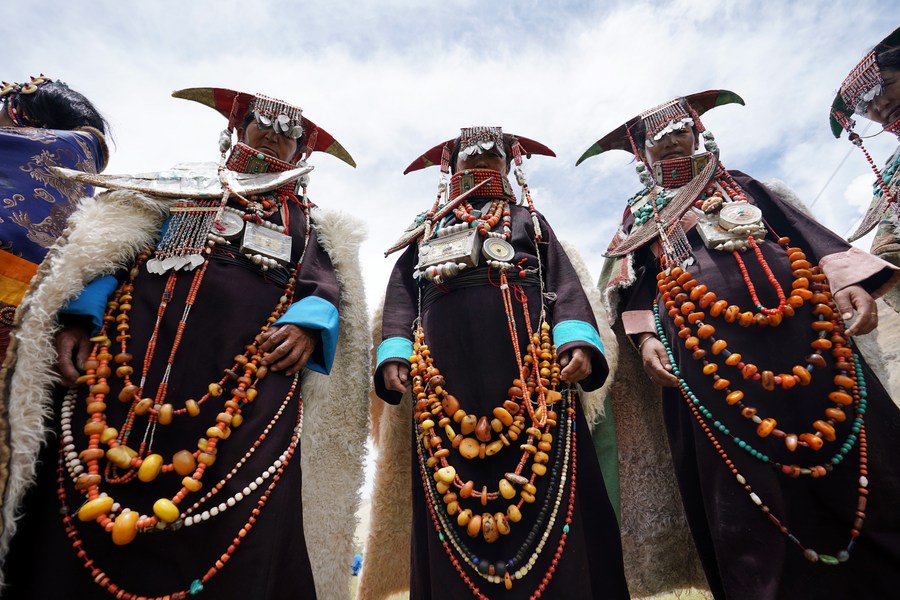
Women wearing Burang clothes are seen in Burang County of Ali, southwest China's Tibet Autonomous Region, July 28, 2020. (Xinhua/Zhan Yan)
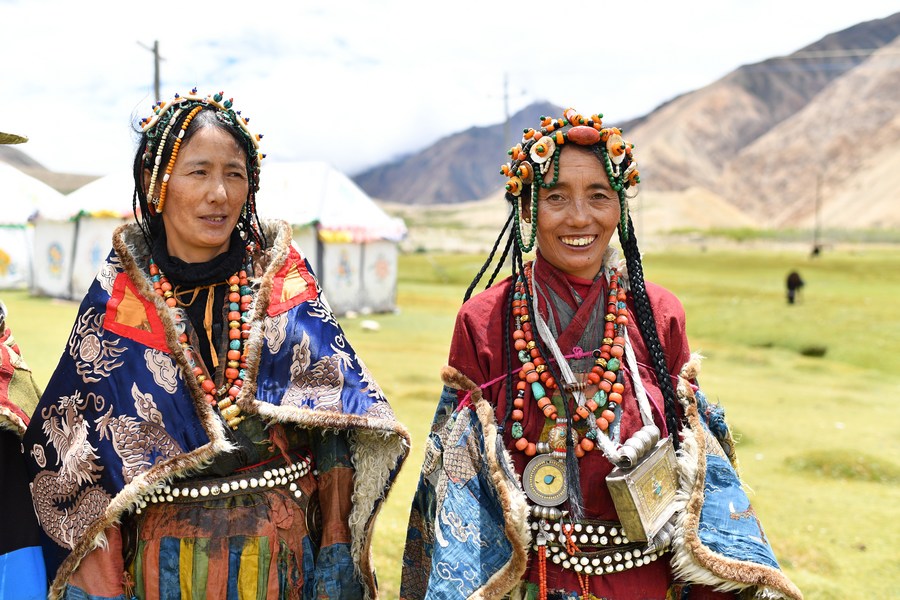
Women wearing Burang clothes are seen in Burang County of Ali, southwest China's Tibet Autonomous Region, July 28, 2020. (Xinhua/Zhan Yan)
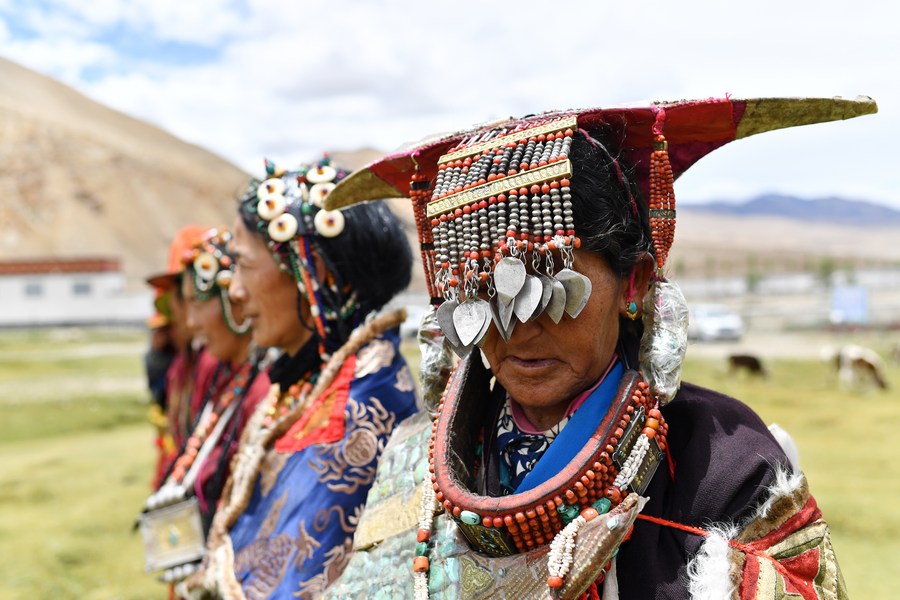
Women wearing Burang clothes are seen in Burang County of Ali, southwest China's Tibet Autonomous Region, July 28, 2020. (Xinhua/Zhan Yan)
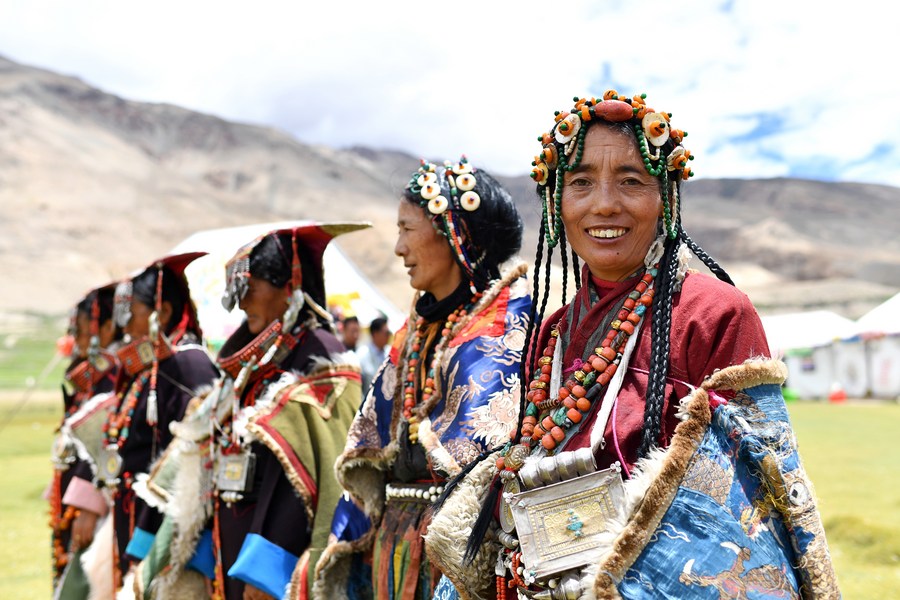
Women wearing Burang clothes are seen in Burang County of Ali, southwest China's Tibet Autonomous Region, July 28, 2020. (Xinhua/Zhan Yan)
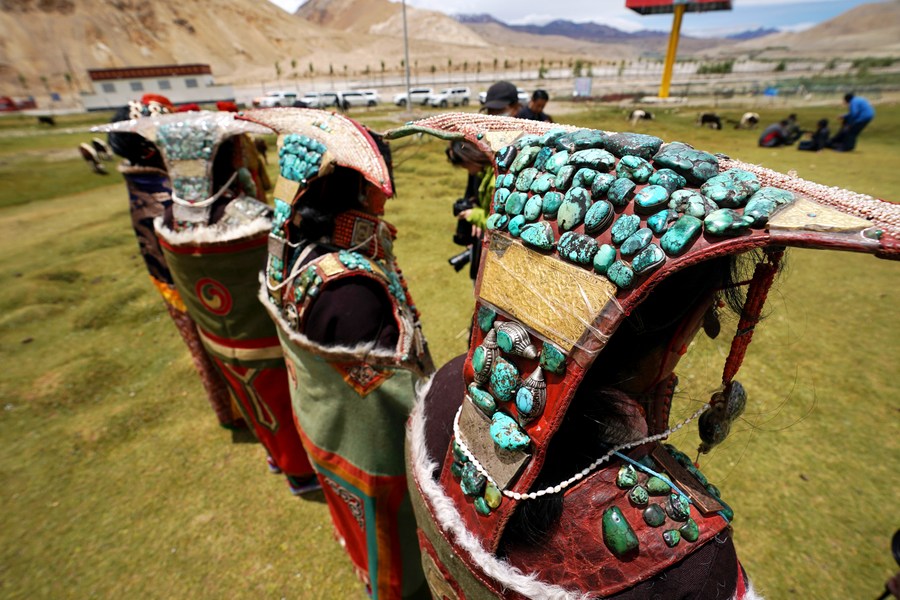
Women wearing Burang clothes are seen in Burang County of Ali, southwest China's Tibet Autonomous Region, July 28, 2020. (Xinhua/Zhan Yan)
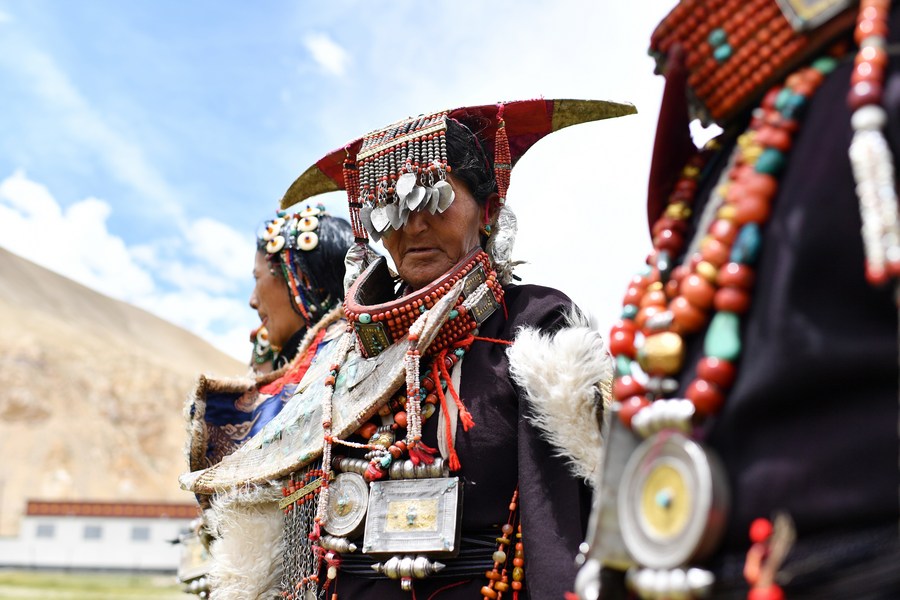
Women wearing Burang clothes are seen in Burang County of Ali, southwest China's Tibet Autonomous Region, July 28, 2020. (Xinhua/Zhan Yan)
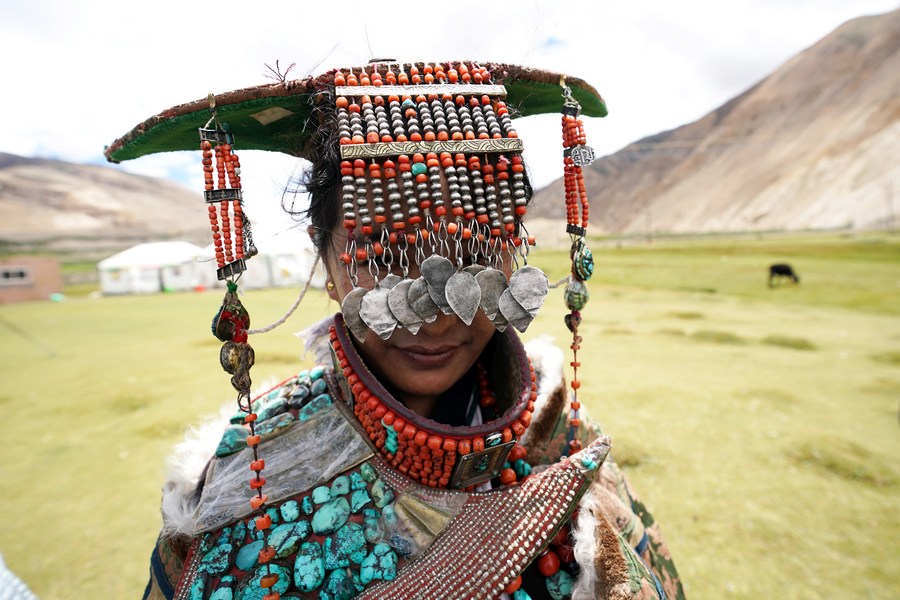
A woman wearing Burang clothes is seen in Burang County of Ali, southwest China's Tibet Autonomous Region, July 28, 2020. (Xinhua/Zhan Yan)
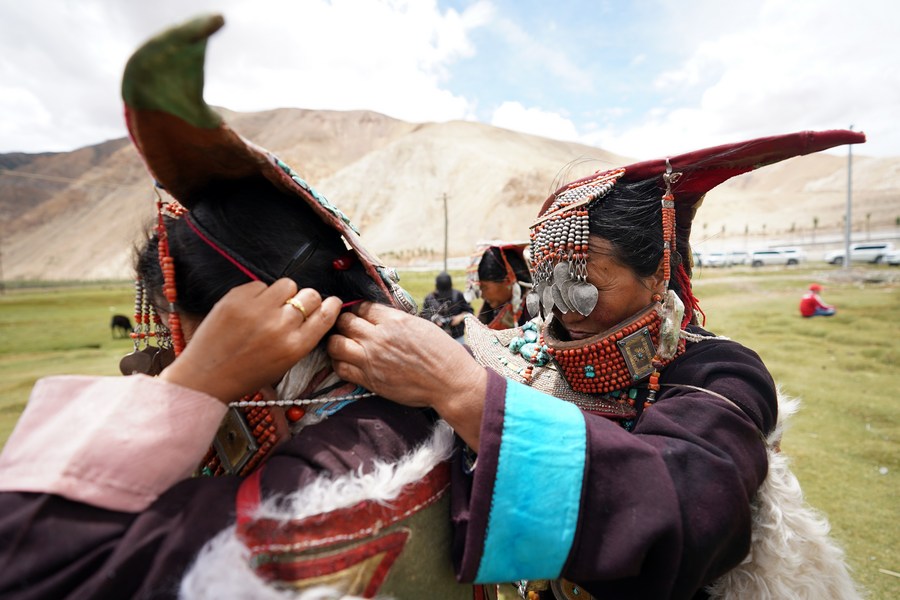
Women wearing Burang clothes are seen in Burang County of Ali, southwest China's Tibet Autonomous Region, July 28, 2020. (Xinhua/Zhan Yan)
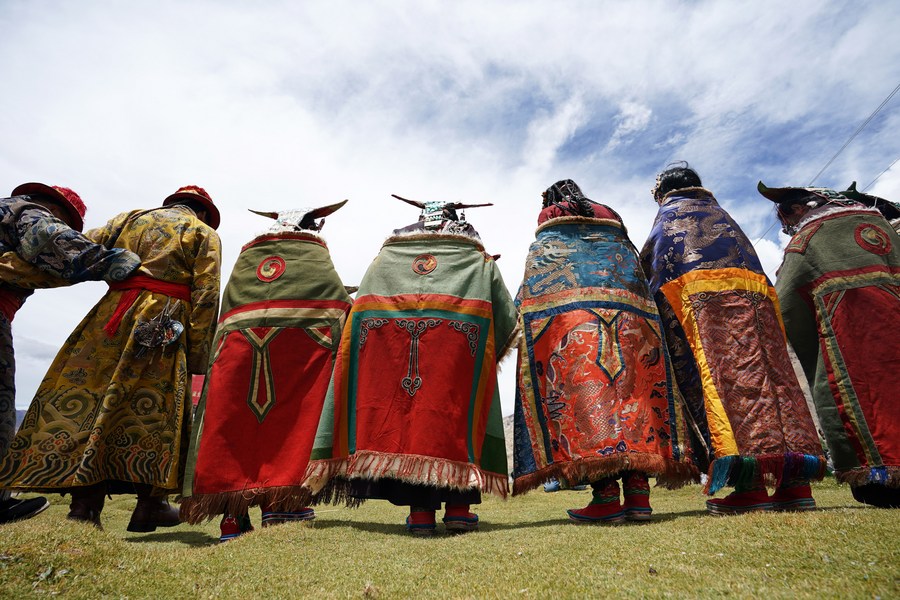
People wearing Burang clothes are seen in Burang County of Ali, southwest China's Tibet Autonomous Region, July 28, 2020. (Xinhua/Zhan Yan)
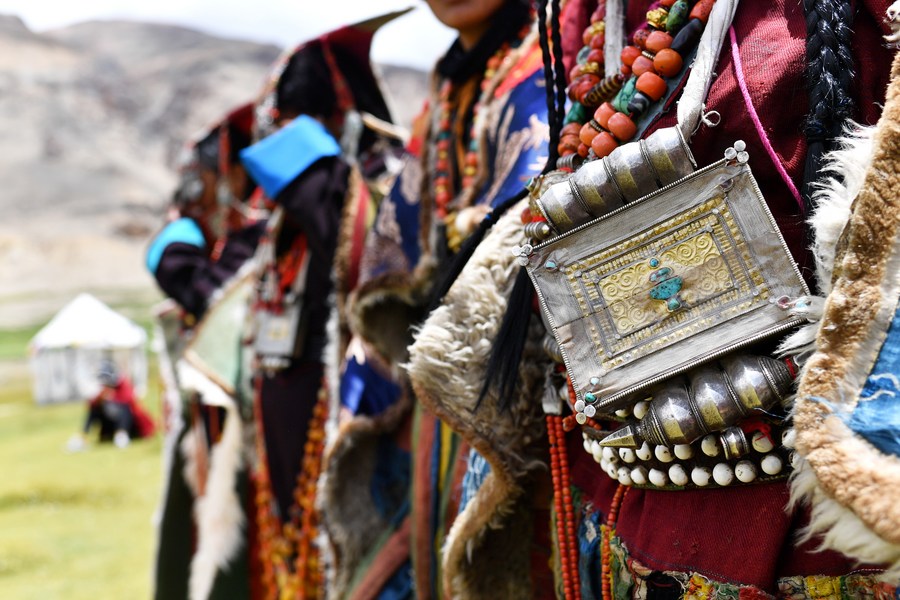
Women wearing Burang clothes are seen in Burang County of Ali, southwest China's Tibet Autonomous Region, July 28, 2020. (Xinhua/Zhan Yan)
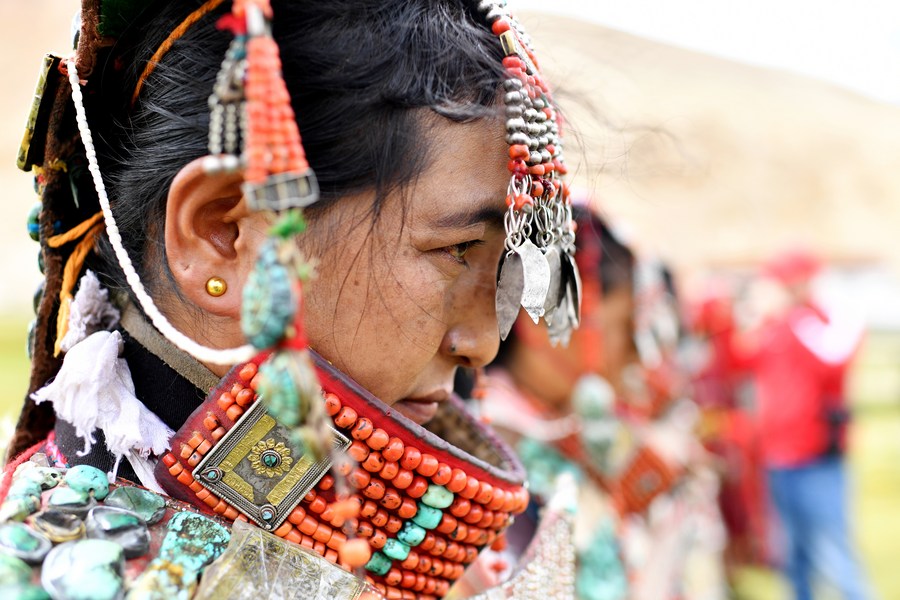
A woman wearing Burang clothes is seen in Burang County of Ali, southwest China's Tibet Autonomous Region, July 28, 2020. (Xinhua/Zhan Yan)
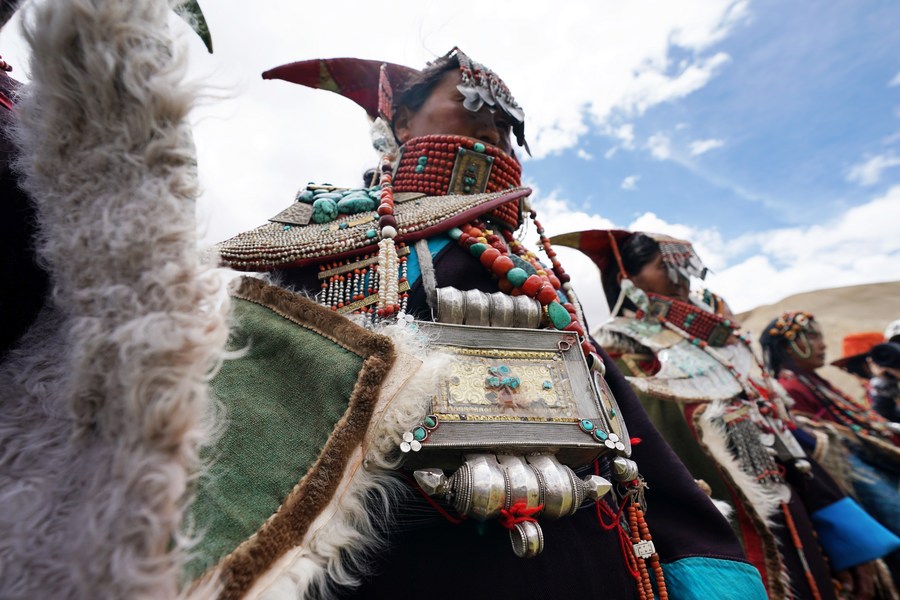
Women wearing Burang clothes are seen in Burang County of Ali, southwest China's Tibet Autonomous Region, July 28, 2020. (Xinhua/Zhan Yan)■
 简体中文
简体中文





